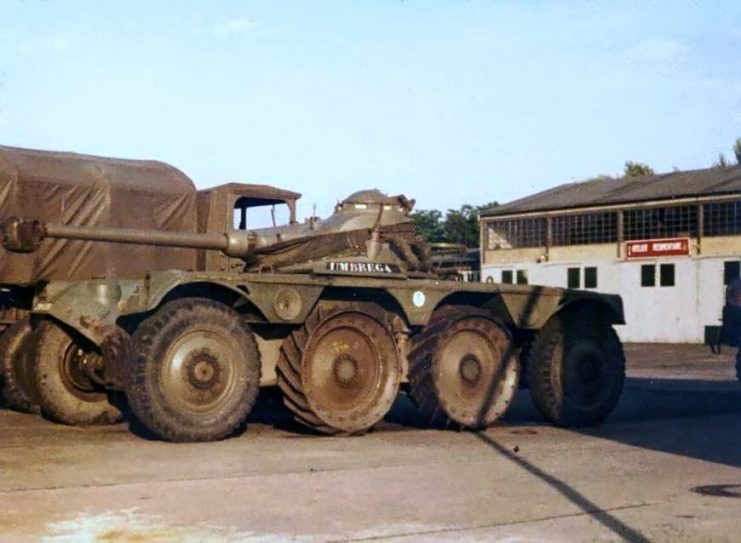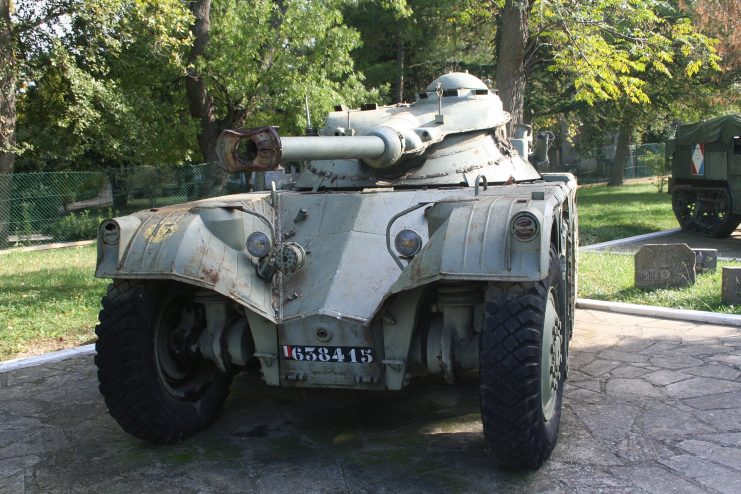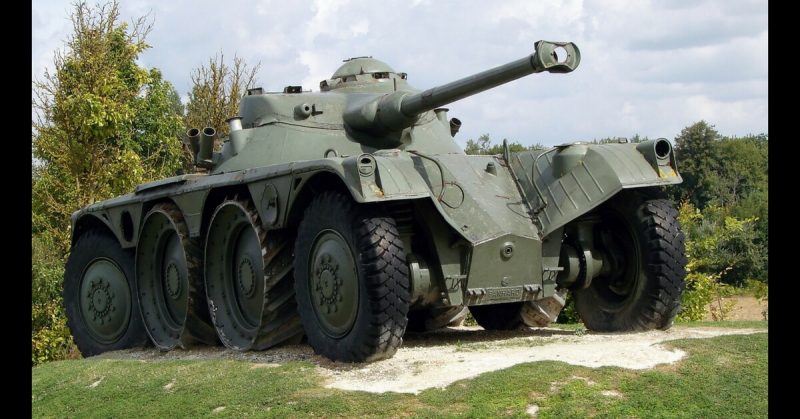The Panhard EBR was a French reconnaissance vehicle made in several different variants in the period between 1951 and 1963. Based on a design that dated before WWII, it was upgraded and modernized in the 1940s to catch up with the standards of military technology which were revolutionized during the war years.
The Panhard EBR was one of the first post-war armored vehicles (together with the AMX 13), to have an oscillating turret, capable of carrying a large caliber cannon, with the minimum of weight. The turret, which never gained much popularity outside France, enabled a low silhouette for the tank with its small size while providing a higher gun placement.
It was also designed to make better use of an autoloader system, a revolutionary achievement which reduced the crew, as the loader was replaced by a compact device inside the turret.
The canon attached to the Panhard was a 75 mm gun known as the FL-10, introduced with the 1954 version when the first 650 units were built. Afterwards, in 1963, the gun was upgraded to a 90 mm FL-11.
Secondary armament included a maximum of four 7.5 mm machine guns ― one co-axial, one operated by the driver, one by the co-driver and one by the commander. The number of machine guns depended on the model and the variant, as most Panhard EBR’s were produced without the machine gun intended to be operated by the commander.
As it was an armored vehicle primarily to be used for reconnaissance, Panhard’s armor was light, but it was concentrated in both the front and rear allowing it to be as effective while driving in reverse as forward. In fact, one of the strange traits of this French design was that it had two drivers, one in the front and one in the rear so that it could function identically from both directions.

The EBR was powered by a 200 hp engine located directly under the fighting compartment. While this had advantages regarding protection, once the engine was damaged, the whole turret had to be dismounted before making any major repairs. Needless to say, it made the Panhard EBR extremely unsuitable for frontline maintenance.
To understand the role of this particular vehicle it is necessary to examine the emerging doctrines of the French Army before WWII. As early as 1935, as a result of reforms initiated by the Light Mechanized Divisions, a series of lightweight but heavily armed recon vehicles were planned to fill in the gaps within the development of armored warfare.
The Panhard EBR was more than capable of engaging light or even medium tanks, despite the fact that it was completely unable to withstand a hit from such tanks, due to its light armor. Its role on the battlefield was primarily reconnaissance. Similar to its predecessor, the pre-war Panhard 178, the EBR relied on hit-and-run tactics, and was therefore disproportionately armed, when compared to its weight of only 13 tons.
The French, who planned to produce vast numbers of heavy tanks right after WWII, needed a light and fast vehicle to cover an extensive battlefield and provide crucial intelligence data before deploying their heavy armor. The reason for this was the fact that during that time, heavy tanks proved to be slow, unreliable and difficult to maintain. The commanders needed to think twice before risking any action with their heavy armored units.

Besides recon, the Panhard was intended to serve in auxiliary duties, such as flank-security and offensive protection, where its firepower would come in handy.
The French most notably used the vehicle during the Algerian civil war, where it proved suitable for police and anti-insurrection operations. The Portuguese Army purchased 100 units which were actively employed during the Angolan Civil War – a tiresome guerilla war which stretched for 13 years, starting in 1966 and ending with the retreat of Portuguese colonial forces in 1974.
An APC version was built exclusively for the Portuguese, named Panhard EBR-VTT, and was most notably used by the 1st Cavalry Company, nicknamed the Dragoons of Angola, during the same conflict.
